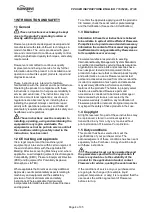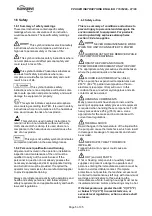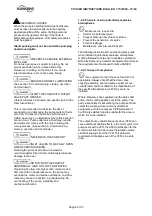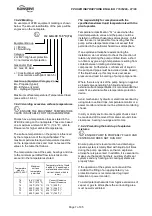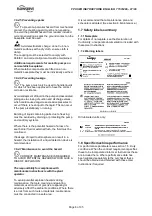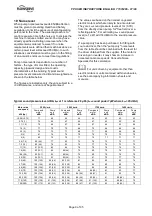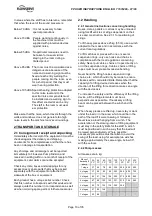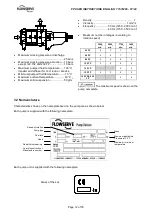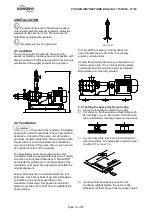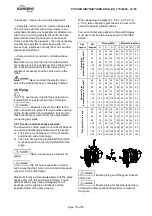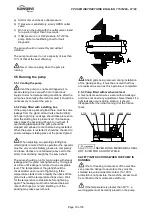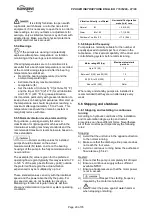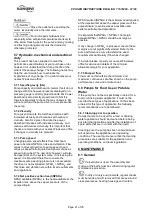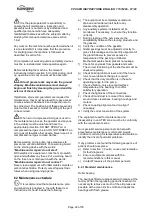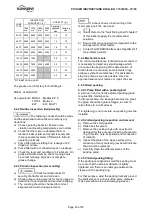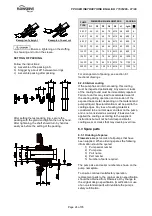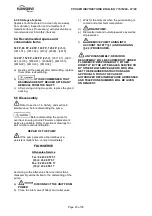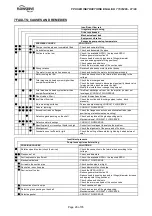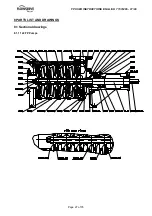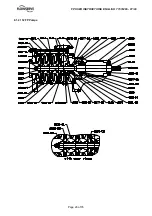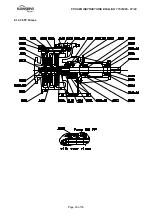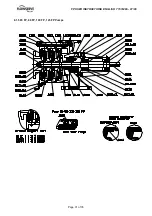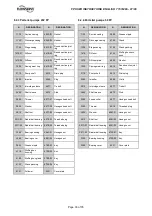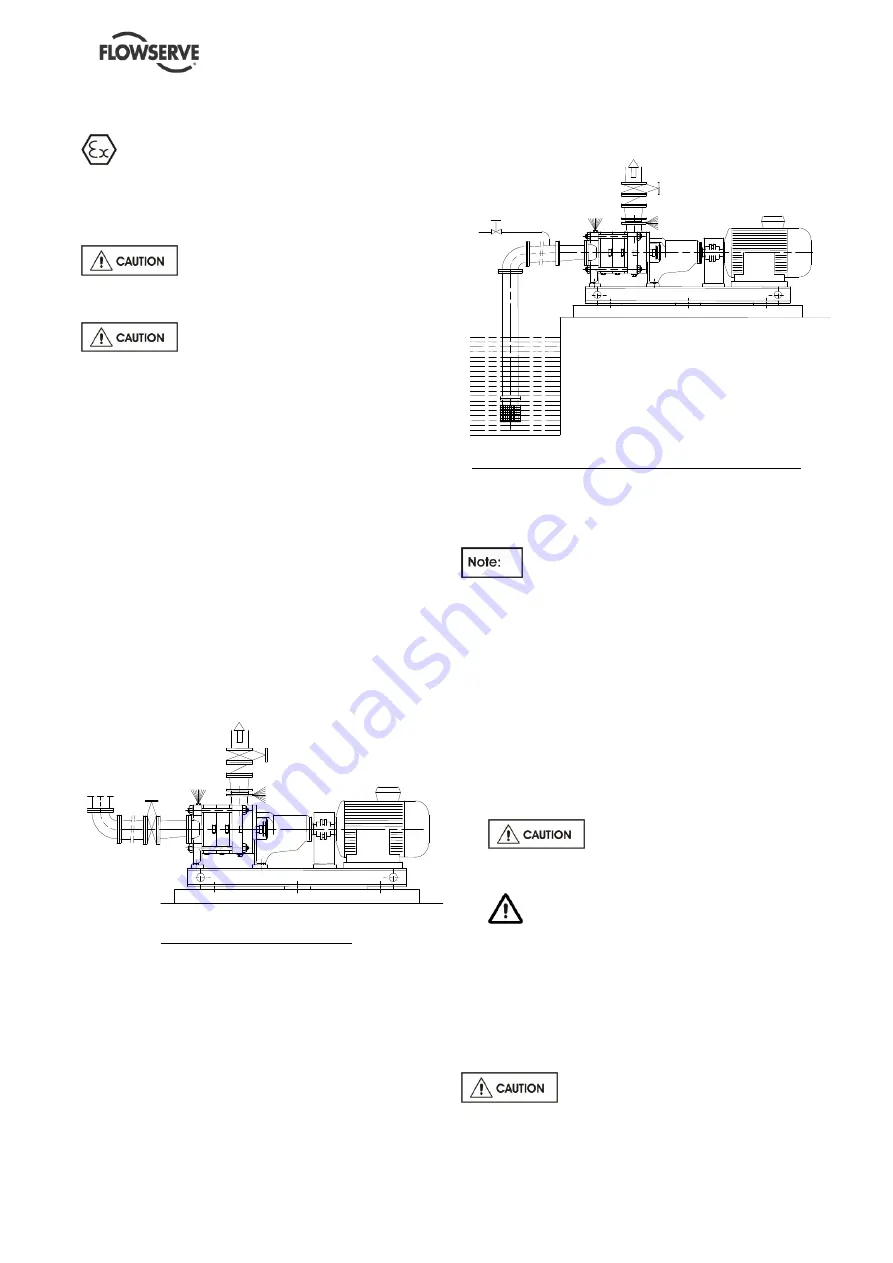
FP USER INSTRUCTIONS ENGLISH 71576286 - 07/06
Page 18 of 35
5.3 Priming and auxiliary supplies
Where there is any risk of the pump being run
against a closed valve generating high liquid and
casing external surface temperatures it is
recommended that users fit an external surface
temperature protection device.
Ensure all electrical, hydraulic,
pneumatic, sealant and lubrication systems (as
applicable) are connected and operational.
Ensure the inlet pipe and pump
casing are completely full of liquid before starting
continuous duty operation.
These operations must be carried out by personnel
with approved qualifications.
5.3.1 Priming of a flooded pump
a) As discharge valve is closed, fill the pump by
opening the valve at suction.
b) Let air escape by removing the plugs situated on
the flange of the discharge casing and suction
casing (for the 122, 152 to 202 FP pumps). For
the 50 to 125 FP pumps, plugs are located on
pipework.
c)
The discharge pipe is headed and there is a by-
pass valve on the check valve, open slightly the
discharge valve and the by-pass of the check
valve.
d) When the pump is totally free of air bubbles,
replace the plugs.
Air escape
Air escape
Priming of a flooded pump
5.3.2 Priming of a sump suction pump
* With foot valve:
a) Fill suction pipe and casing with liquid from an
independent source (pressure 1 to 2 bars).
b) Let air escape by removing the plugs situated on
the flange of the discharge casing and suction
casing (for the 122, 152 to 202 FP pumps). For
the 50 to 125 FP pumps, plugs are located on
pipes.
c)
When the pump is totally free of air bubbles,
replace the plugs.
Air escape
Air escape
Priming of sump suction pump with foot valve
*Without foot valve:
Priming may be accomplished by means of venting
system.
Foot valves are not recommended when
the pumped liquid has suspended solid particles.
They may lodge between foot valve seat and
shutter.
5.4 Starting the pump
5.4.1 Bring controls and preparation before the
first starting and after each service call
Necessarily:
a) Check the tightening of the different plugs.
b) Check that the gland lightly tightens the packing
rings.
c)
Risk of seal ring overheating.
d) Check the direction of rotation of the motor.
Refer to the rotation arrow of the pump.
e)
Install all protection systems and more
particularly the coupling guard and the shield
grid (reference [9331]) of the bearing.
f)
Open all suction valves (if existing).
g) Close the outlet valve and the bypass valve.
h) Ensure inlet pipe and pump casing are
completely full of liquid.
5.4.2 First pump start-up
Suction valves must be fully open
when pump is running. Never run the pump dry, it
will cause damage.

